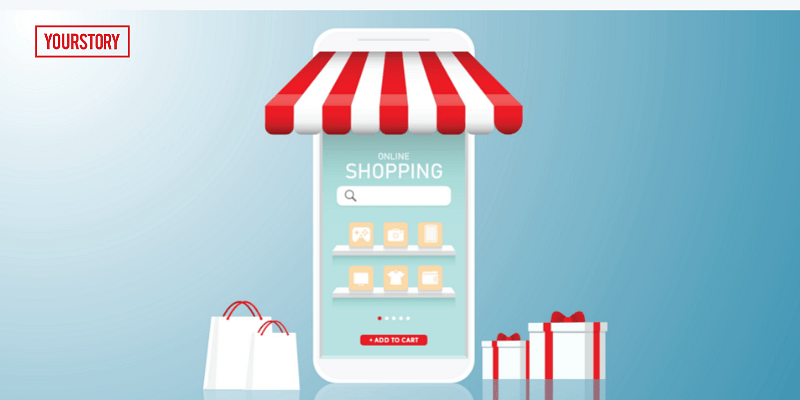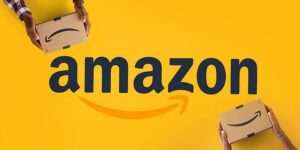Steve Jobs introduced the world’s first smartphone as we know it (though IBM developed the SPCs at least 15 years back) at the Macworld conference. No one at that time could predict the ubiquitous impact these handheld devices have on our day-to-day lives.
From a handful of apps to an app for everything, we’ve come a long way. But the most important aspect is how it has changed the way we research and buy things online. Mobile commerce is the natural evolution of ecommerce, both identical and dissimilar in their own ways.
Mobile commerce (or simply, mcommerce) has had tremendous growth in the last decade. According to Statista, mcommerce accounts for 53 percent of the total ecommerce revenue this year. The same number was hovering around 34 percent in 2017. In a short four-year span, the percentage share of mcommerce has grown by 60 percent.
Consumers are exhibiting a major shift in purchasing behaviour because mobile apps have become more intuitive and far easier to make a purchase.
These apps are a better way to engage and promote new products or offers. They provide a smooth, seamless buying experience with a personalised touch. It’s become a necessity even for smaller players to scale their business, increase revenue, and establish trust.
The mcommerce landscape is the hotspot for cutting edge technologies — from no-code mobile app platforms to augmented reality.
Let’s take a look at seven technologies that are pushing the boundaries in mcommerce.
Progressive web apps
Slow loading times are the bane of online businesses. Nothing puts people off than a page that takes forever to load. One out of two people will leave a webpage that hasn’t fully loaded in three seconds.
Combined with the dwindling patience of the average shopper and the incapability of mobile sites to render quickly, it’s a challenge for brands to convert site visitors. This is where Progressive Web Apps (PWA) come into the picture.
PWAs are a cross between mobile apps and mobile sites to put things simply. They look like an app but there’s no need to download them. They offer offline usability and push notifications just like an app but rely on web technologies.
PWAs are at least 75 percent faster than a regular site and offer more reliability.
There are several tools like Easy PWA and Ampify that help you build progressive web apps without any coding.
Live video commerce
Live selling (or, live video commerce) has gained tremendous popularity during the pandemic. It offered a totally different way to engage with customers. The market for live selling in the US is almost going to hit $11 billion by the end of 2021. And let’s not even get started about China, where the tech accounts for almost $66 billion in sales.
Live selling combines the elements of ecommerce and live streaming. Sellers present their product through the stream, answer questions in real time, and encourage viewers to buy products. It helps provide the brand experience and instill confidence in the purchasers regarding fit, quality, and authenticity.
Low-code/no-code mobile app builders
Low-code and no-code applications gained a lot of traction in the second half of the last decade. Tools like Appian and Outsystems empowered the citizen developer. But very few SaaS companies were able to translate the no-code mechanism to native iOS and Android apps.
There’s immense potential for these applications as the retail landscape is sliding toward mcommerce. Less than one percent of all ecommerce stores in the world have a mobile app. There’s plenty of room for these low- and no-code applications to grow exponentially.
Behavior-triggered push notifications
While most push notifications are sent manually, automated, behaviour-triggered notifications are a league ahead.
Behavioural triggers are when your users take specific actions (or inaction in some cases) that signal a push that can result in a favorable action. Take abandoned carts for example.
A message like this when a user leaves without checking out can make them complete the purchase. There are several creative ways you can use these to send the right message to the right people at the right time.
You could send welcome messages to new users, a nudge to people who haven’t made a purchase in a while. Really, the sky’s the limit here.
Voice-based search
Alexa! Add coffee to my cart.
Voice search is expected to hit $40 billion in sales by 2022. Almost 43 percent of people who own voice-enabled devices use voice search to shop for products. The rise in voice-search is a game changer for most businesses. It’s a superfast, convenient way to purchase things.
Shoppers can use voice to search for items, choose their sizes and colors, add items to their cart, and complete the checkout process. Any business that’s overlooking this up and coming technology is sure to miss out on some huge revenue gains.
Augmented reality
One of the biggest challenges to eCommerce conversions is that the shopper has to imagine how the product would fit. Let’s say you’re buying a table, you would ideally imagine how it would look in your home office. With augmented reality integrated into your store, you can actually see it, instead of imagining it.
AR uses app functionalities to create an augmented rendition of the real world. It can offer additional stimuli like visuals and sounds, providing additional information in an engaging way.
For example, the tech uses the camera function via an app. Lenskart implemented this exceptionally well. The online eye-wear brand lets users try on different models virtually, thereby helping them find the perfect fit for them.
According to Goldman Sachs, the technology is expected to reach $1.6 billion before 2025. The tech is still in the nascent stages with a lot of potential for growth.
Chatbots
A chatbot is an AI program that converses with your shoppers just like a human would. Most brands use chatbots to provide information, generate leads, book appointments, and answer common questions. Some of the advanced ones can even personalise the conversation to a greater degree.
The number one benefit of using chatbots is the efficiency with which they respond. They’re available 24×7 and can provide instantaneous answers to most questions.
While they’re ubiquitous on the web, they haven’t quite penetrated the mobile app market. Tools like Luka and Prisma are already making strides in this space.
As smartphones become even more pervasive, consumers are constantly looking at new ways to be engaged. Having a mobile-app strategy is a must for all businesses, irrespective of the size. Any online business that wants to stay ahead of your competition must keep an eye on these technologies.
(Disclaimer: The views and opinions expressed in this article are those of the author and do not necessarily reflect the views of YS.)










